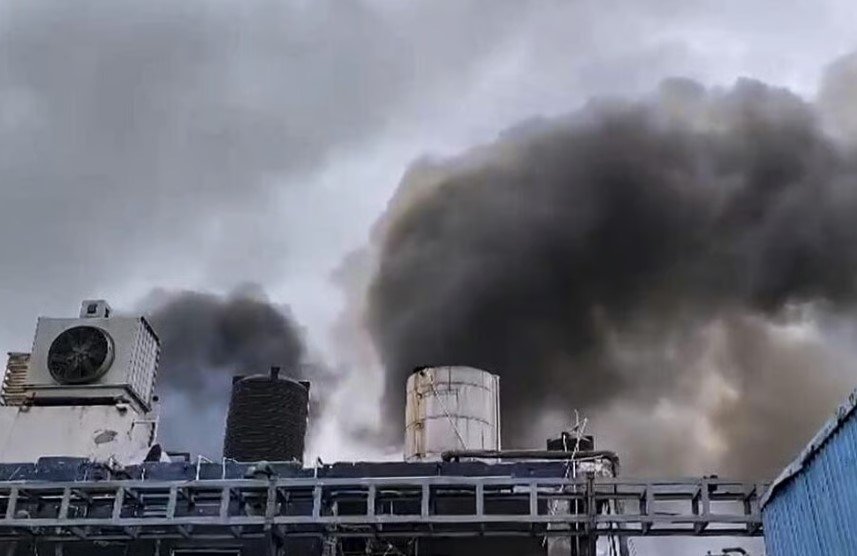As investigators debate BLEVE vs dust ignition, safety culture in India’s booming pharma sector faces serious scrutiny
A blast shook Telangana’s Pashamylaram industrial belt on Monday. The kind that tears apart not just buildings, but lives. Dozens of workers are gone. Six still unaccounted for. And what remains is a crater of grief, a factory torn open, and growing outrage over safety blind spots in India’s pharmaceutical hubs.
While the official cause is still under review, early theories are already sparking debate. And it’s a debate that could decide the future of how India’s industrial safety rules are enforced—or not.
Competing Theories, But One Common Denominator: Negligence
Officials from Telangana’s Factories Department initially pointed to a BLEVE—short for Boiling Liquid Expanding Vapour Explosion. It’s a complex phenomenon, where overheated pressurized liquids suddenly vaporize and explode when the vessel fails.
But many experts aren’t buying that explanation.
Senior chemical safety expert Babu Rao, formerly of the Indian Institute of Chemical Technology, watched footage from the blast. What he saw, he says, didn’t match a BLEVE at all. Instead, he believes it was a dust explosion—a type of blast often ignored in Indian regulatory systems.
He estimates the blast’s force to be equivalent to around 400 kilograms of TNT. That’s no minor miscalculation. That’s war-zone scale energy inside a factory where people were working regular shifts, likely unaware they were sitting on a literal powder keg.

What’s a Dust Explosion Anyway?
The term sounds innocent. Dust? Really?
Yes, really. Because certain types of dust—especially in industrial settings—can be incredibly volatile under the right (or wrong) conditions. If suspended in air and ignited, even fine particles can combust explosively.
What makes dust explosions so deadly is how quietly they form and how violently they erupt. The triggers? Could be a spark, friction, or even a buildup of static charge. And once ignited, the chain reaction can obliterate entire sections of buildings in seconds.
• According to the U.S. Chemical Safety Board, dust explosions have been behind over 150 deadly industrial accidents globally in the last two decades.
And yet, in India, dust risk management remains barely a footnote in many safety protocols.
Static Charge, Pressurized Chambers, and Missed Signals
Sigachi Industries manufactures microcrystalline cellulose, a fine, powdery substance widely used in pharmaceuticals.
And therein lies the issue. Multiple insiders say the plant lacked sufficient ventilation systems to safely manage suspended particles. Add to that the monsoon-induced humidity, a potential buildup of static charge, and you’ve got the kind of recipe that doesn’t need a stove to explode.
One official from the Factories Department, speaking on condition of anonymity, said, “We’ve seen poor dust control measures before, but this one’s alarming. The site shows a very clear pattern of wavefront damage—classic dust explosion behavior.”
And what about BLEVE? Rao says that if this were a BLEVE, the damage would have shown a directional, heat-intensive rupture. That’s not what the evidence points to.
At this point, the Forensic Science Laboratory is examining residue and pressure data from the reactor. But either way—whether it was dust, pressure, or both—the failure is human.
Rescue Halted, Families Left Guessing
By Tuesday evening, the death toll had hit 36, with over 300 officials engaged in rescue and recovery. But relentless rain halted operations.
Six workers remain missing, and with each passing hour, hope is thinning.
One local rescue volunteer said simply, “We are pulling out limbs.”
A grieving mother outside the site collapsed when officials handed over her son’s ID card—charred and bent.
And in the distance, the factory’s half-standing frame loomed, as if still holding secrets.
Safety Gaps in the Pharma Capital
Telangana, particularly Hyderabad and its surrounding industrial belts like Pashamylaram, has branded itself India’s pharma capital. And for good reason.
But the growth has often outpaced regulation.
Here’s the hard look at what factories like Sigachi are often missing:
| Safety Aspect | Common Issues in Local Facilities |
|---|---|
| Dust Collection Systems | Frequently outdated or completely absent |
| Static Grounding Infrastructure | Poorly maintained, if at all installed |
| Emergency Ventilation | Inadequate for scale of chemical output |
| Worker Training & Drills | Sporadic, with little focus on dust risk |
| Audit Transparency | Lax documentation and weak enforcement |
Even though Pashamylaram falls under multiple inspection zones, whistleblowers have repeatedly flagged irregular audits.
No Public Hearings, No Accountability?
This incident isn’t isolated. Telangana has seen four major industrial accidents in the past year alone. Yet, no structured public review has followed.
Environmental groups are furious that many of these incidents—including this one—have bypassed formal public hearings on safety.
Industrial lawyer V. Krishna says the pattern is concerning: “Companies file environmental clearances, but state boards rarely dig deep. It’s often a copy-paste job.”
And when accidents happen, blame tends to fall on operators or machine errors. But real accountability? That’s often harder to pin down.
What’s Next for Sigachi—and the Industry?
Sigachi Industries has issued a statement expressing sorrow and vowing cooperation with investigators. But questions remain over whether the company will face fines, criminal charges, or simply continue business after some cosmetic safety upgrades.
Back in the industrial neighborhood, fear is quietly spreading.
One worker from a nearby unit told The Hindu, “We’re just waiting for our number. This could have been us.”
The Telangana government has promised a review of safety norms across all industrial units. But unless that review leads to tangible overhaul—clear dust control mandates, transparent audits, mandatory safety drills—it risks becoming another file gathering dust on a bureaucrat’s desk.
And this time, that dust could kill.
